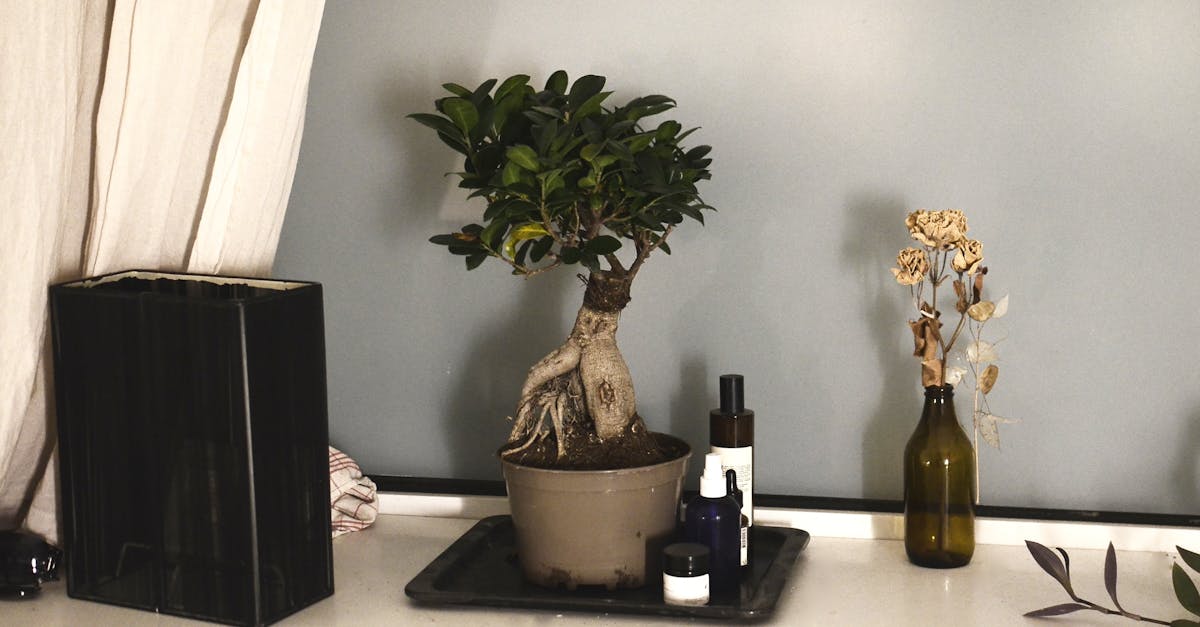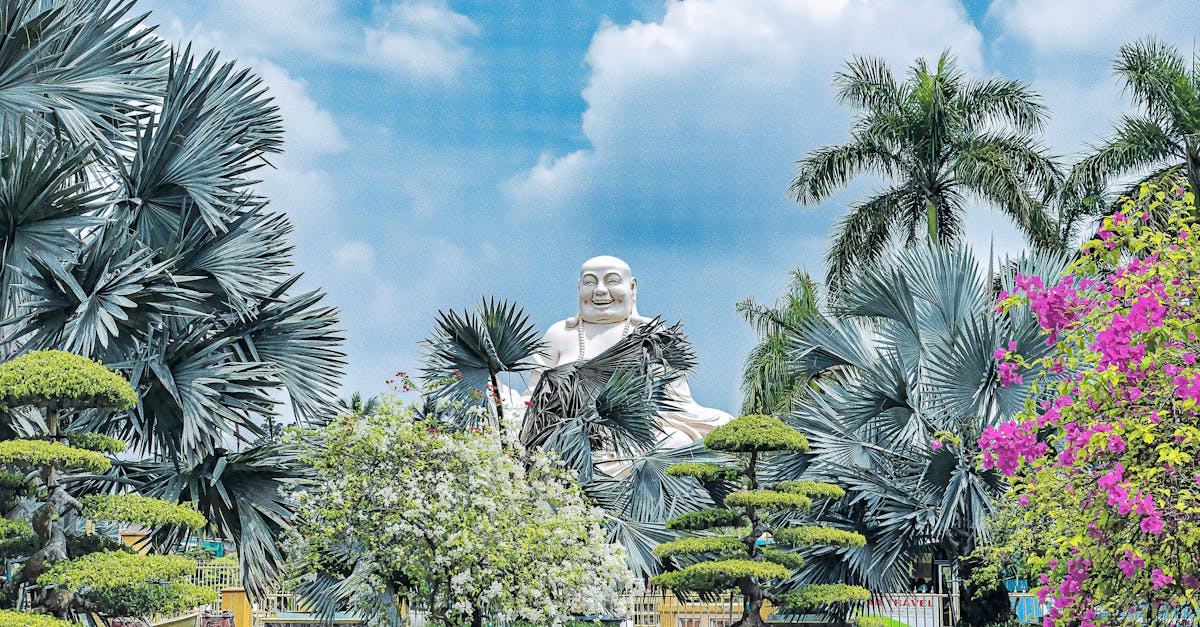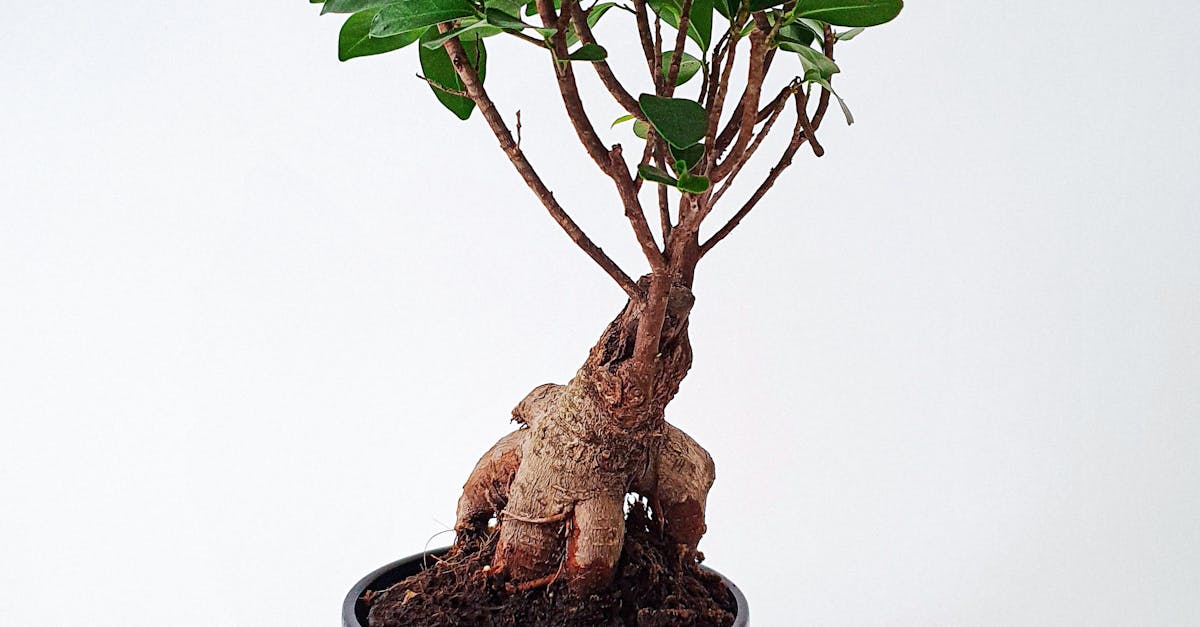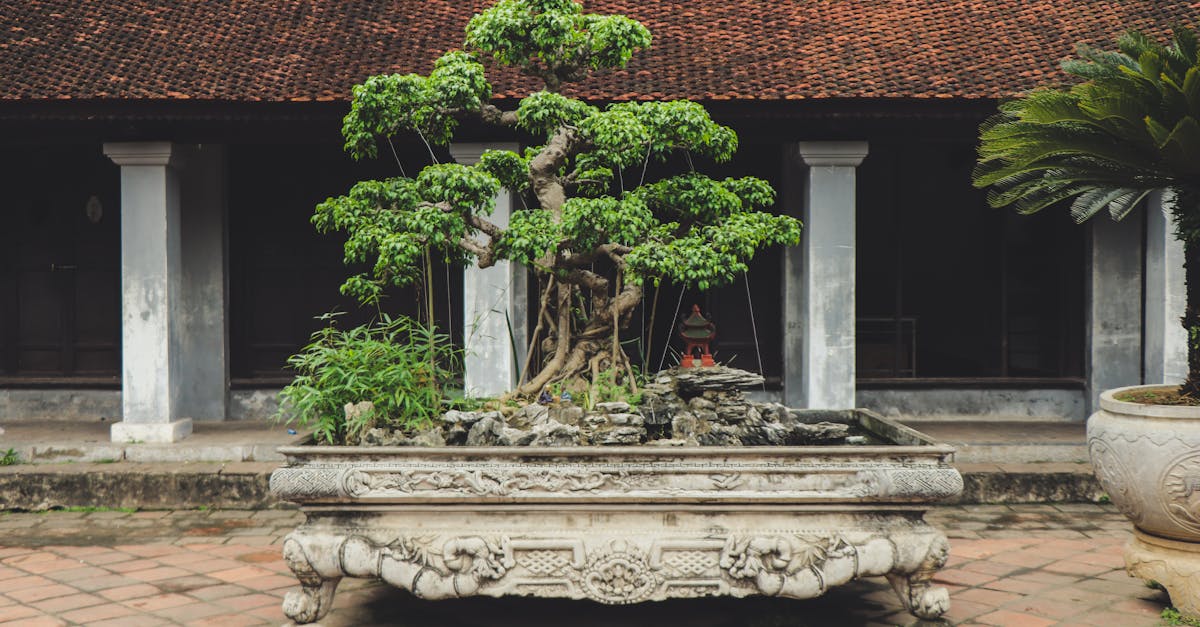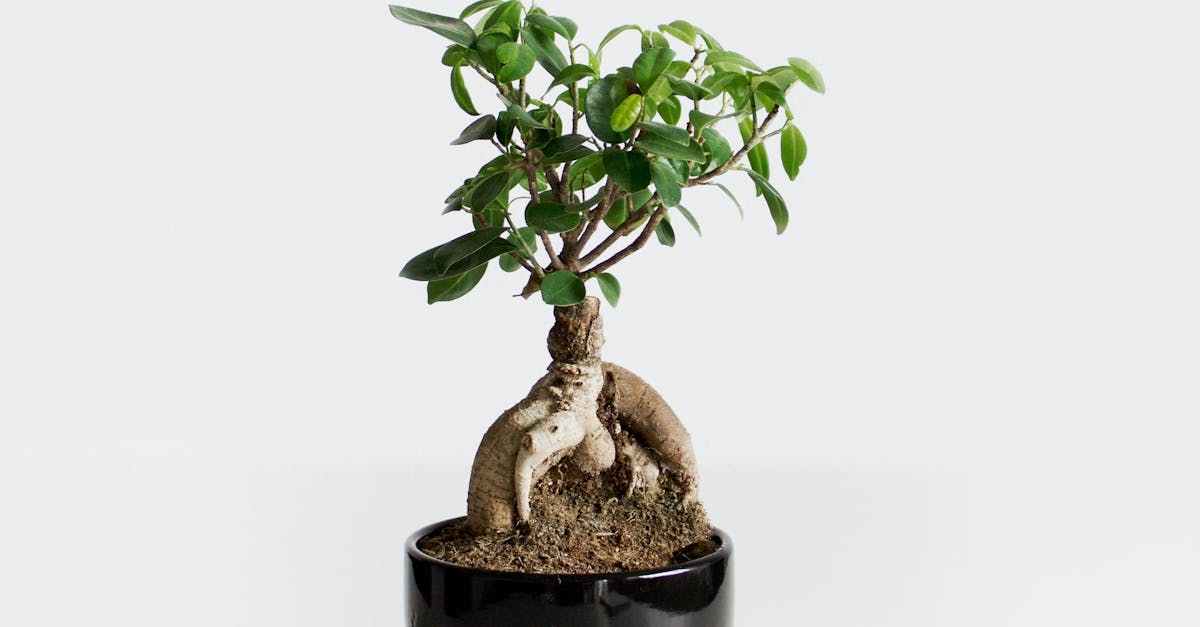Early Detection: The Key to Bonsai Health
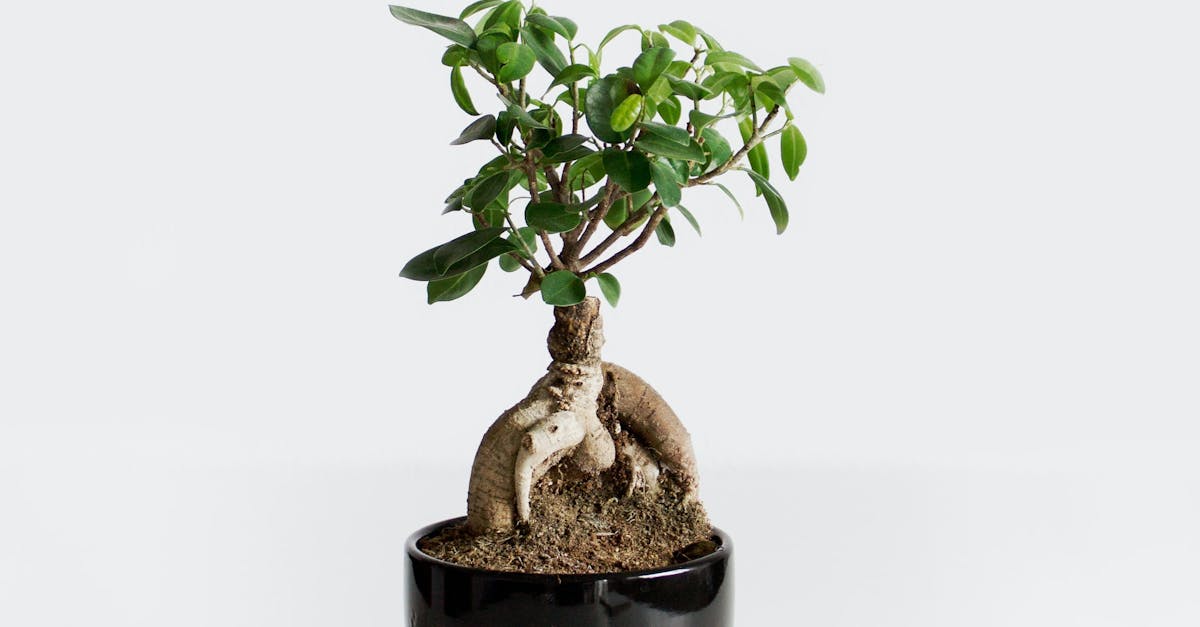
Even the best gardener can be plagued by the occasional issue with their plants, and bonsai are no different. However, what sets bonsai apart from other plants is the close attention to detail required for their care. This means that early detection of any problems is essential. In this article, we will discuss how often you should inspect your bonsai for signs of illness, what to look for as warning signs, common illnesses to be on the lookout for, and preventive measures you can take to minimize the risk of illness. We will also go over a few basic steps you can take to treat bonsai ailments if you catch them early. Whether you’re a seasoned bonsai enthusiast or just starting out, this article is a valuable resource for keeping your trees healthy and thriving.
1. The Importance of Regular Inspection
Regular inspection of your bonsai is crucial for ensuring its longevity and well-being. Early detection of any problems, such as pests or diseases, gives you the best chance of taking timely action to treat the issue and prevent it from causing serious damage to your tree.
There are a number of signs that may indicate that your bonsai is unwell, including discolored leaves, stunted growth, insect infestations, and root rot. By regularly inspecting your tree, you can identify these problems early on and take steps to address them before they become more serious.
Catching problems early also gives you a better chance of treating them successfully. For example, if you catch a pest infestation early on, you may be able to remove the pests by hand or treat them with a mild pesticide. However, if the infestation is allowed to progress, it may become more difficult to control and could ultimately kill your tree.
2. Frequency of Inspection

The frequency with which you should inspect your bonsai will depend on a number of factors, including the species of tree, its age, and the environmental conditions in which it is growing. However, a general guideline is to inspect your trees at least once a month during the growing season.
Younger trees and trees that are new to your collection should be inspected more frequently, as they are more susceptible to pests and diseases. You may also want to inspect your trees more frequently if they are growing in a particularly humid or shady environment, as these conditions can favor the development of fungal diseases.
During your inspections, be sure to look for any signs of pests or diseases, such as discolored leaves, stunted growth, or insect infestations. If you find any problems, take steps to address them immediately. Early detection and treatment is the best way to keep your bonsai healthy and thriving.
Weekly Inspection for Young Trees
Young bonsai trees require more frequent monitoring than established trees, as they are more susceptible to pests and diseases and are still developing their root systems. Weekly inspections will help you to identify and address any problems early on, before they have a chance to cause serious damage to your tree.
During your weekly inspections, be sure to look for the following:
- Discolored leaves: Yellowing, browning, or wilting leaves can be a sign of nutrient deficiencies, pests, or disease.
- Stunted growth: Slowed or halted growth can be a sign of root problems, insufficient sunlight, or nutrient deficiencies.
- Insect infestations: Inspect for aphids, mealybugs, and scale insects that can damage leaves and stems.
- Root rot: Soft, mushy roots, discoloration, and a foul odor indicate root rot; immediate action is required.
If you find any problems during your inspection, take steps to address them immediately. Early detection and treatment is the best way to keep your young bonsai tree healthy and thriving.
Monthly Inspection for Established Trees
Established bonsai trees can generally be inspected monthly, but you may need to adjust the frequency based on the tree’s health and the season. For example, if your tree is showing signs of stress, such as yellowing leaves or stunted growth, you may want to inspect it more frequently. You should also inspect your tree more frequently during the growing season, as this is when pests and diseases are most active.
During your monthly inspections, be sure to look for the same signs of pests and diseases that you would look for during your weekly inspections of young trees. In addition, you should also check the tree’s roots for any signs of rot or damage.
If you find any problems during your inspection, take steps to address them immediately. Early detection and treatment is the best way to keep your established bonsai tree healthy and thriving.
3. Signs of Illness to Look For
Common signs of illness in bonsai trees include discolored leaves, stunted growth, insect infestations, and root rot. Familiarity with these symptoms will enable you to promptly diagnose and treat any problems that your tree may develop.
Discolored leaves can be a sign of nutrient deficiencies, pests, or disease. Yellowing leaves can indicate a nitrogen deficiency, while browning leaves can be a sign of a potassium deficiency. Wilting leaves can be a sign of overwatering or underwatering.
Stunted growth can be a sign of root problems, insufficient sunlight, or nutrient deficiencies. If your tree is not growing as quickly as you think it should be, check the roots for any signs of damage or rot. You should also make sure that the tree is getting enough sunlight and nutrients.
Insect infestations can be a major problem for bonsai trees. Aphids, mealybugs, and scale insects are all common pests that can damage leaves and stems. If you see any signs of insect infestation, take steps to control the pests immediately.
Root rot is a serious condition that can kill your bonsai tree if it is not treated promptly. Soft, mushy roots, discoloration, and a foul odor are all signs of root rot. If you suspect that your tree has root rot, you should repot it immediately in fresh soil.
Discolored Leaves
Discolored leaves are a common sign of illness in bonsai trees. The color of the leaves can indicate the type of problem that your tree is experiencing.
- Yellowing leaves can be a sign of a nitrogen deficiency, overwatering, or root rot. Nitrogen is an essential nutrient for plants, and a deficiency can cause the leaves to turn yellow and drop off. Overwatering can also cause the leaves to turn yellow, as the roots are unable to absorb enough oxygen. Root rot is a serious condition that can kill your tree if it is not treated promptly.
- Browning leaves can be a sign of a potassium deficiency, sunburn, or drought. Potassium is another essential nutrient for plants, and a deficiency can cause the leaves to turn brown and dry out. Sunburn can also cause the leaves to turn brown, as the leaves are damaged by the sun’s UV rays. Drought can also cause the leaves to turn brown, as the tree is not getting enough water.
- Wilting leaves can be a sign of underwatering, overwatering, or root rot. Underwatering can cause the leaves to wilt as the tree is not getting enough water. Overwatering can also cause the leaves to wilt, as the roots are unable to absorb enough oxygen. Root rot is a serious condition that can kill your tree if it is not treated promptly.
If you see any discolored leaves on your bonsai tree, it is important to identify the cause of the problem and take steps to correct it. Early detection and treatment is the best way to keep your bonsai tree healthy and thriving.
Stunted Growth
Stunted growth is a common problem in bonsai trees. It can be caused by a variety of factors, including root problems, insufficient sunlight, or nutrient deficiencies.
Root problems are a common cause of stunted growth in bonsai trees. The roots of a bonsai tree are responsible for absorbing water and nutrients from the soil. If the roots are damaged or diseased, the tree will not be able to get the nutrients it needs to grow. Root problems can be caused by a variety of factors, including overwatering, underwatering, and root rot.
Insufficient sunlight can also cause stunted growth in bonsai trees. Bonsai trees need plenty of sunlight to photosynthesize and produce food. If a bonsai tree is not getting enough sunlight, it will not be able to grow properly.
Nutrient deficiencies can also cause stunted growth in bonsai trees. Bonsai trees need a variety of nutrients to grow properly, including nitrogen, phosphorus, and potassium. If a bonsai tree is not getting enough of these nutrients, it will not be able to grow properly.
If you are concerned about stunted growth in your bonsai tree, it is important to identify the cause of the problem and take steps to correct it. Early detection and treatment is the best way to keep your bonsai tree healthy and thriving.
Insect Infestations
Insect infestations are a common problem for bonsai trees. Aphids, mealybugs, and scale insects are all common pests that can damage leaves and stems.
Aphids are small, soft-bodied insects that feed on the sap of plants. They can cause leaves to turn yellow and drop off. Aphids can also spread diseases to bonsai trees.
Mealybugs are small, white insects that cover themselves in a waxy coating. They feed on the sap of plants and can cause leaves to turn yellow and drop off. Mealybugs can also spread diseases to bonsai trees.
Scale insects are small, armored insects that attach themselves to the stems and leaves of plants. They feed on the sap of plants and can cause leaves to turn yellow and drop off. Scale insects can also spread diseases to bonsai trees.
If you see any signs of insect infestation on your bonsai tree, it is important to take steps to control the pests immediately. Early detection and treatment is the best way to prevent serious damage to your tree.
There are a variety of methods that you can use to control insect infestations on bonsai trees. Some common methods include:
- Insecticidal soap is a safe and effective way to control insect infestations on bonsai trees. Insecticidal soap kills insects by breaking down their exoskeletons.
- Neem oil is a natural insecticide that can be used to control insect infestations on bonsai trees. Neem oil works by disrupting the hormones of insects, which prevents them from feeding and reproducing.
- Ladybugs are natural predators of aphids and other insects. You can release ladybugs into your bonsai tree to help control insect infestations.
Root Rot
Root rot is a serious condition that can kill your bonsai tree if it is not treated promptly. Root rot is caused by a fungus that attacks the roots of the tree. The fungus causes the roots to rot and die, which prevents the tree from absorbing water and nutrients from the soil.
Symptoms of root rot include:
- Soft, mushy roots
- Discoloration of the roots
- A foul odor
If you suspect that your bonsai tree has root rot, you should take immediate action. The first step is to remove the tree from its pot and inspect the roots. If the roots are soft and mushy, and if they have a foul odor, then your tree has root rot.
Once you have confirmed that your tree has root rot, you need to take steps to treat it. The first step is to remove all of the infected roots. You should also remove any soil that is infected with the fungus.
Once you have removed all of the infected roots and soil, you need to repot your tree in fresh soil. You should also water your tree with a fungicide to help prevent the fungus from spreading.
Root rot is a serious condition, but it can be treated if it is caught early. If you suspect that your bonsai tree has root rot, take immediate action to treat it.
4. Taking Action When Illness Is Detected

Once you have identified the problem that is affecting your bonsai tree, you need to take steps to treat it. The type of treatment that you need to use will depend on the specific problem that you are dealing with.
Adjusting watering schedule
If your bonsai tree is suffering from overwatering or underwatering, you will need to adjust your watering schedule. Overwatered trees should be allowed to dry out completely before watering them again. Underwatered trees should be watered thoroughly until the water drains out of the bottom of the pot.
Applying pesticides
If your bonsai tree is infested with insects, you can apply pesticides to control the pests. There are a variety of different pesticides that you can use, so be sure to choose one that is specifically designed for the type of insect that you are dealing with.
Repotting the tree
If your bonsai tree has root rot, you will need to repot it in fresh soil. When you repot your tree, be sure to remove all of the infected roots and soil. You should also water your tree with a fungicide to help prevent the fungus from spreading.
Other treatments
In some cases, you may need to use other treatments to care for your bonsai tree. For example, if your tree is suffering from a nutrient deficiency, you may need to fertilize it. If your tree is sunburned, you may need to move it to a shadier location.
It is important to take action as soon as you detect any signs of illness in your bonsai tree. Early detection and treatment is the best way to keep your tree healthy and thriving.
Isolating the Affected Tree
If you have a bonsai tree that is showing signs of illness, it is important to isolate it from your other trees to prevent the spread of disease. Diseased trees can spread diseases to healthy trees through contact with leaves, stems, or roots. They can also spread diseases through the air or through water.
Isolating a diseased tree is simple. Simply move the tree to a separate location away from your other trees. You should also avoid watering or pruning your diseased tree at the same time that you water or prune your healthy trees.
If you have multiple bonsai trees, it is a good idea to keep them all in separate pots. This will help to prevent the spread of disease if one of your trees becomes ill.
In addition to isolating diseased trees, you should also practice good hygiene to help prevent the spread of disease. This includes washing your hands before and after handling your trees, and sterilizing your tools after using them on a diseased tree.
By following these simple steps, you can help to prevent the spread of disease and keep your bonsai trees healthy and thriving.
Pruning Infected Branches/Leaves
If your bonsai tree has any diseased or infected branches or leaves, it is important to remove them as soon as possible to prevent the spread of disease. Diseased or infected branches and leaves can spread diseases to other parts of the tree, and they can also attract pests.
To prune infected branches or leaves, use a sharp, clean pair of scissors or pruning shears. Cut the branch or leaf off at a point just below the infected area. Be sure to sterilize your tools after using them on a diseased tree.
Once you have pruned the infected branches or leaves, dispose of them immediately. Do not compost them, as this could spread the disease to other plants.
Pruning infected branches or leaves is an important part of keeping your bonsai tree healthy. By removing diseased or infected areas, you can help to prevent the spread of disease and keep your tree looking its best.
Applying Pesticides or Fungicides
If your bonsai tree is infested with pests or has a fungal infection, you may need to apply pesticides or fungicides to control the problem. Pesticides are used to kill pests, while fungicides are used to kill fungi.
There are many different types of pesticides and fungicides available, so it is important to choose one that is specifically designed for the type of pest or fungus that you are dealing with. You should also read the label carefully before using any pesticide or fungicide, as some products can be harmful to humans and animals.
To apply pesticides or fungicides, you can use a spray bottle, a watering can, or a paintbrush. Be sure to apply the product evenly to all of the affected areas of the tree.
Once you have applied the pesticide or fungicide, allow it to dry completely. You should then wash your hands thoroughly with soap and water.
Pesticides and fungicides can be effective in controlling pests and fungal infections, but they should be used only when necessary. If you can, try to use natural methods to control pests and diseases, such as neem oil or insecticidal soap.
Repotting with Fresh Soil
Repotting your bonsai tree may be necessary for a variety of reasons, including root problems or poor drainage. Repotting can help to improve the health of your tree and prevent problems in the future.
If your bonsai tree is rootbound, it means that the roots have outgrown the pot and are starting to circle around the inside of the pot. This can restrict the growth of the tree and cause problems with water and nutrient uptake. Repotting a rootbound tree will give the roots more room to grow and improve the overall health of the tree.
Poor drainage can also be a problem for bonsai trees. If the soil in the pot does not drain properly, it can lead to waterlogged roots and root rot. Repotting your tree in a pot with better drainage will help to prevent these problems.
When you repot your bonsai tree, be sure to use a soil mix that is specifically designed for bonsai trees. Bonsai soil mixes are usually well-draining and contain a variety of nutrients that are essential for the health of the tree.
To repot your bonsai tree, carefully remove it from its current pot and gently loosen the roots. Be careful not to damage the roots. Place the tree in the new pot and fill in the space around the roots with bonsai soil mix. Tamp down the soil gently to remove any air pockets.
After you have repotted your bonsai tree, water it thoroughly and place it in a warm, sunny location. Your tree may need some time to adjust to its new pot, so be patient and monitor its health carefully.
5. Preventive Measures
Regular inspection and preventative measures are essential for maintaining the health of your bonsai tree and reducing the risk of illness. By taking a few simple steps, you can help your tree to thrive for many years to come.
Proper watering
One of the most important things you can do for your bonsai tree is to water it properly. Bonsai trees need to be watered regularly, but they should not be overwatered. Overwatering can lead to root rot and other problems.
The best way to water your bonsai tree is to check the soil regularly and water it when the soil is dry to the touch. You should water your tree thoroughly, but allow the excess water to drain out of the pot.
Fertilization
Bonsai trees also need to be fertilized regularly to provide them with the nutrients they need to grow and stay healthy. You should fertilize your bonsai tree every few weeks during the growing season.
There are many different types of bonsai fertilizers available, so be sure to choose one that is specifically designed for bonsai trees. You should also follow the instructions on the fertilizer label carefully.
Hygiene
Good hygiene is also important for preventing the spread of disease in your bonsai trees. You should regularly remove any dead or diseased leaves or branches from your trees. You should also clean your tools and pots after using them on a diseased tree.
By following these simple steps, you can help to keep your bonsai trees healthy and thriving for many years to come.
Proper Watering
Watering is one of the most important aspects of bonsai care. Bonsai trees need to be watered regularly, but they should not be overwatered. Overwatering can lead to root rot and other problems.
The best way to water your bonsai tree is to check the soil regularly and water it when the soil is dry to the touch. You should water your tree thoroughly, but allow the excess water to drain out of the pot.
Here are some tips for watering your bonsai tree properly:
- Use room-temperature water. Cold water can shock the roots of your tree.
- Water your tree slowly and evenly. This will help to prevent the water from running off the surface of the soil.
- Water your tree until the water drains out of the bottom of the pot. This will help to ensure that the roots are getting enough water.
- Allow the soil to dry out slightly between waterings. This will help to prevent the roots from rotting.
It is important to adjust your watering schedule according to the season and the climate in which you live. During the summer, your tree may need to be watered more frequently than during the winter. If you live in a humid climate, your tree may need to be watered less frequently than if you live in a dry climate.
By following these tips, you can help to keep your bonsai tree healthy and thriving.
Fertilization
Fertilization is an important part of bonsai care. Bonsai trees need to be fertilized regularly to provide them with the nutrients they need to grow and stay healthy.
You should fertilize your bonsai tree every few weeks during the growing season. There are many different types of bonsai fertilizers available, so be sure to choose one that is specifically designed for bonsai trees. You should also follow the instructions on the fertilizer label carefully.
When fertilizing your bonsai tree, it is important to use a balanced fertilizer. A balanced fertilizer will contain all of the nutrients that your tree needs to grow and stay healthy. You should also avoid over-fertilizing your tree, as this can damage the roots.
Here are some tips for fertilizing your bonsai tree properly:
- Use a balanced fertilizer.
- Follow the instructions on the fertilizer label carefully.
- Fertilize your tree every few weeks during the growing season.
- Avoid over-fertilizing your tree.
By following these tips, you can help to keep your bonsai tree healthy and thriving.
Hygiene
Hygiene is an important part of bonsai care. By keeping your bonsai tree clean and free of debris, you can help to reduce the risk of pests and diseases.
One of the most important things you can do is to remove fallen leaves and debris from around your bonsai tree. Fallen leaves and debris can provide a breeding ground for pests and diseases. You should also remove any dead or diseased branches from your tree.
In addition to removing fallen leaves and debris, you should also clean your bonsai tree’s pot and tools regularly. This will help to prevent the spread of pests and diseases.
Here are some tips for keeping your bonsai tree clean and free of debris:
- Remove fallen leaves and debris from around your bonsai tree regularly.
- Remove any dead or diseased branches from your tree.
- Clean your bonsai tree’s pot and tools regularly.
By following these tips, you can help to keep your bonsai tree healthy and thriving.
Quiz
1. How often should you inspect your bonsai tree for signs of illness during the growing season?
(a) Once a week (b) Once a month (c) Once a year (d) Never
2. Which of the following is NOT a common sign of illness in bonsai trees?
(a) Discolored leaves (b) Stunted growth (c) Healthy roots (d) Insect infestations
3. What is the first step you should take if you detect signs of illness in your bonsai tree?
(a) Apply pesticides (b) Repot the tree (c) Identify the problem (d) Remove infected leaves
4. True or False: It is important to isolate diseased bonsai trees from healthy ones to prevent the spread of disease.
(a) True (b) False
5. Which of the following is NOT a preventive measure you can take to reduce the risk of illness in your bonsai tree?
(a) Proper watering (b) Fertilization (c) Overcrowding the pot (d) Hygiene
Answer Key
- (b) Once a month
- (c) Healthy roots
- (c) Identify the problem
- (a) True
- (c) Overcrowding the pot

